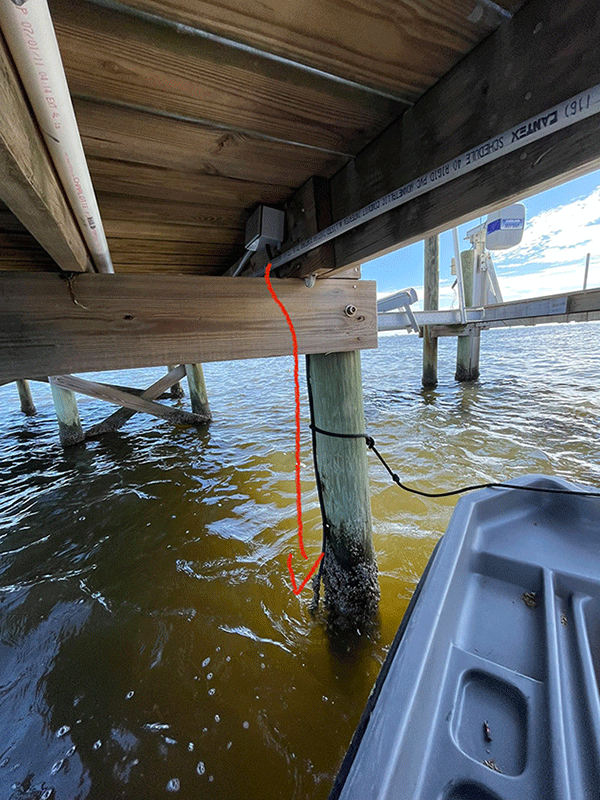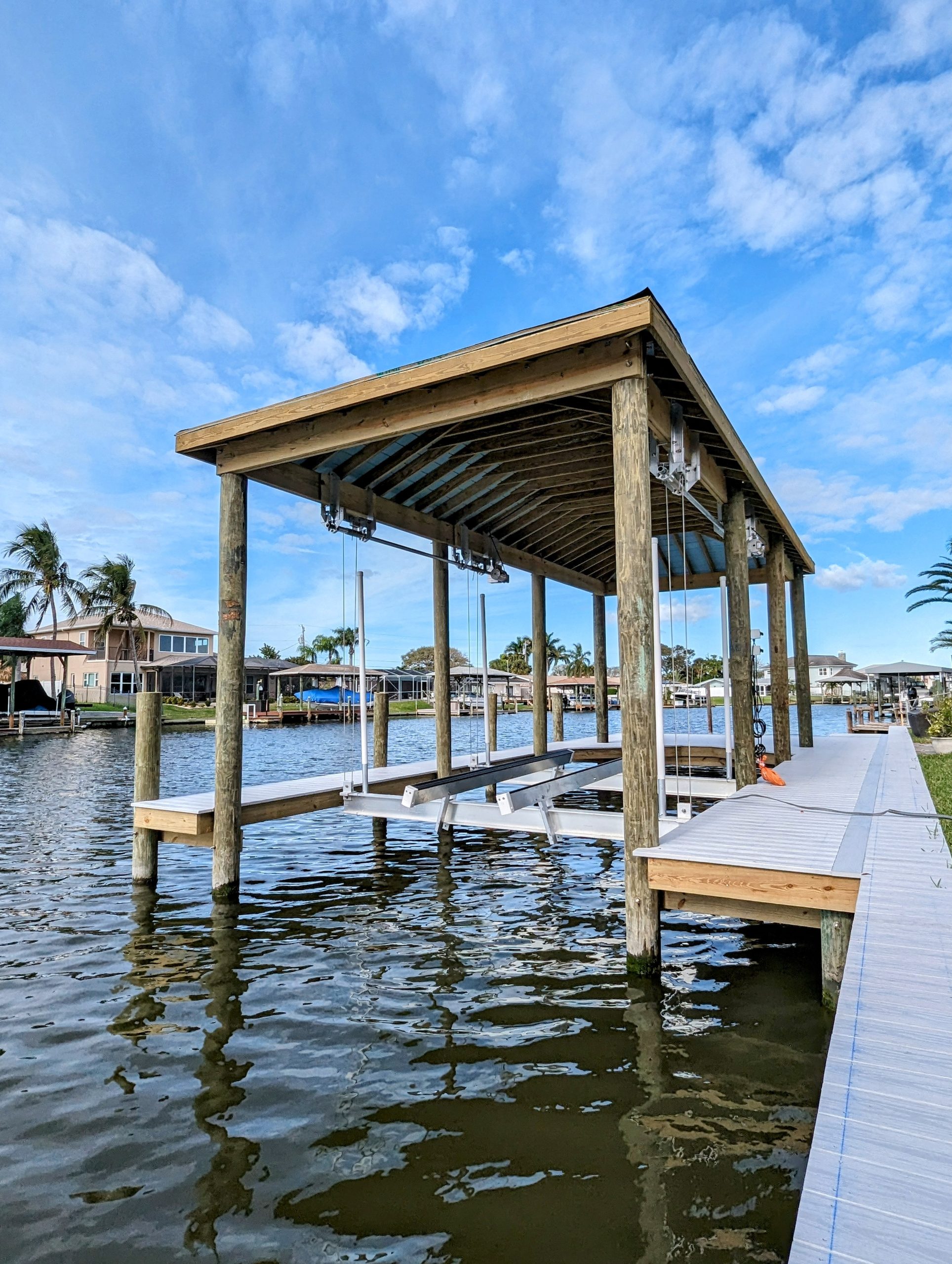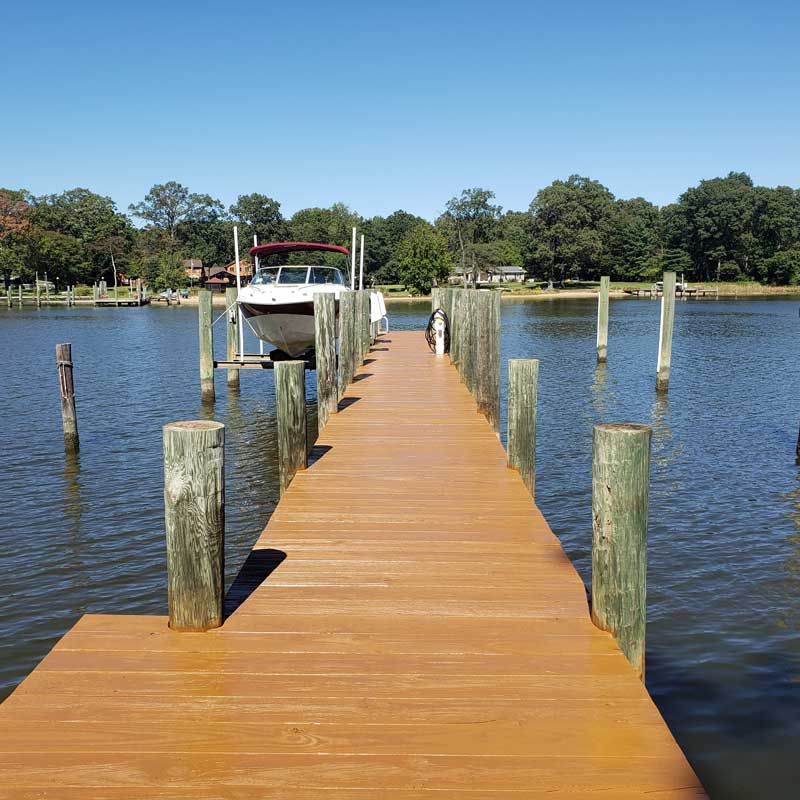Why Routine Maintenance Can Minimize Future Dock Repairs
Why Routine Maintenance Can Minimize Future Dock Repairs
Blog Article
Effective Dock Repair Service Techniques: Making Certain Architectural Integrity
Ensuring the structural integrity of docks through effective repair work methods is critical for the long life and security of aquatic facilities. Consequently, picking the ideal fixing materials, such as composite materials and corrosion-resistant alloys, is essential for durability.
Examining Dock Damage
Assessing dock damages is an essential initial step in making sure the architectural stability and safety of any docking center. Key facets to check out include the dock's foundation, pilings, outdoor decking, and hardware (Dock Repairs).
Architectural engineers or qualified examiners commonly carry out these assessments using specialized devices and strategies. Undersea assessments might employ finder tools or remotely ran vehicles (ROVs) to detect immersed damages. Over water, aesthetic examinations are complemented by utilizing moisture meters and various other diagnostic tools to discover underlying concerns not instantly visible to the nude eye.

Choosing Repair Materials
Picking the appropriate repair materials is a pivotal step in the dock reconstruction procedure, one that directly affects the longevity and performance of the repaired framework. Material choice have to be driven by factors such as ecological conditions, load-bearing demands, and compatibility with existing dock parts. As an example, wood is a traditional selection for anchors due to its all-natural strength and visual charm. Picking the appropriate kind of timber, such as pressure-treated lumber or naturally rot-resistant species like cedar or teak, is critical to hold up against marine atmospheres.
In enhancement to timber, composite materials are significantly prominent because of their longevity and low upkeep requirements. Composites, commonly made from a mix of plastic and wood fibers, offer superb resistance to rot, bugs, and UV damage. For metal docks, picking corrosion-resistant alloys such as galvanized steel or marine-grade aluminum is important to prevent rust and ensure architectural honesty in saline water problems.
Epoxy materials and marine-grade sealants are crucial for fixing splits and securing joints, supplying a water-proof obstacle and enhancing the dock's general toughness. By carefully picking top quality materials, dock repairs can accomplish durable results, therefore securing versus future degradation and ensuring secure, reputable use.
Structural Support Techniques
Effective structural reinforcement techniques are important in making certain the stability and longevity of dock fixings. One fundamental method includes making use of steel or composite support bars (rebar) within concrete structures. Rebar gives extra tensile toughness, protecting against cracks and dispersing tons extra equally. This method is particularly efficient for docks subjected to heavy tons or extreme ecological problems.
One more crucial technique is the application of fiber-reinforced polymers (FRP) These products use high strength-to-weight ratios and superb resistance to deterioration, making them perfect for reinforcing wood or concrete docks. FRP can be applied in sheets or strips and bound with epoxy resins to improve architectural integrity.
Bracing and securing systems additionally play a critical duty in architectural reinforcement. Cross-bracing, making use of metal or wooden beam of lights, can counteract lateral forces, minimizing guiding and movement. Securing systems, such as helical piers or driven heaps, give a stable foundation by transferring loads to deeper, much more stable soil layers.
Lastly, the combination of load-distribution plates can aid disperse weight extra evenly across the dock's surface area, reducing localized anxiety points. These strategies jointly make sure that docks remain risk-free and robust, with the ability of standing up to the rigors of their functional atmosphere.
Advanced Repair Service Methods

Another advanced technique entails undersea welding, which enables repairs to be conducted without the requirement to dewater the location. This approach is especially beneficial for dealing with structural issues in submerged dock components, guaranteeing marginal interruption to operations. Improved welding methods, combined with robotic systems, supply accuracy and integrity, you can find out more consequently expanding the life expectancy of the dock.
Additionally, cathodic security systems are carried out to avoid corrosion in metal dock structures. By making use of sacrificial anodes or satisfied existing systems, these techniques successfully alleviate the electrochemical processes that cause product degeneration.
Finally, advanced surveillance modern technologies, such as architectural health monitoring (SHM) systems, provide real-time data on the condition of dock structures. These systems make it possible for aggressive upkeep and timely treatments, ultimately ensuring the long-lasting structural honesty of the dock.
Upkeep and Prevention
Maintenance and prevention are essential concepts that underpin the durability and safety and security of dock frameworks. Normal inspections are vital, permitting very early detection of wear and tear, prospective weak points, and environmental impacts. A positive technique, involving regular look for rust, rot, and structural shifts, reduces pricey repair services and lengthens the dock's operational life.
Safety nets should consist of applying safety coatings to steel elements to secure versus corrosion and utilizing treated wood to withstand decay. Furthermore, making certain appropriate drain and ventilation can avoid water accumulation, which is an usual root cause of architectural destruction. Integrating top quality materials and adhering to producer standards during building and repair stages additionally play vital functions in enhancing longevity.

Training employees in dock upkeep best techniques ensures regular application of safety nets. Leveraging technical breakthroughs, such as drones for inspections and sensing units for real-time tracking, can even more enhance maintenance efforts. By prioritizing upkeep and prevention, dock proprietors can make certain structural stability, functional safety, and cost-effective administration over the dock's life expectancy.
Verdict
To conclude, preserving the structural honesty of aquatic facilities requires thorough dock repair service strategies. Extensive examinations utilizing sophisticated devices reveal both visible and hid problems, while the choice of ideal repair service products boosts sturdiness. Carrying out architectural support methods addresses stress factors effectively. Advanced repair work methods, paired with regular upkeep practices, make certain the dock stays operational and risk-free under varied ecological conditions. Embracing these methods significantly lengthens the lifespan and functionality of marine facilities.
Making sure the structural honesty of docks via efficient repair work techniques is extremely important for the long life and safety and security of marine facilities.Selecting the suitable repair work products is an essential Check This Out action in the dock repair procedure, one that directly affects the longevity and efficiency of the fixed structure.Efficient structural support strategies are essential in guaranteeing the stability and durability of dock fixings. By prioritizing maintenance and prevention, dock owners can ensure structural honesty, functional security, and cost-effective monitoring over the dock's life expectancy.
In final thought, maintaining the architectural stability of marine centers go to these guys demands detailed dock repair work strategies.
Report this page